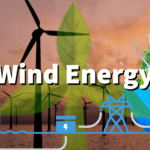The world stands at a pivotal moment in its energy journey, where the urgent need to combat climate change intersects with technological innovation and economic transformation. The concept of energy transition refers to the global shift from fossil fuel-based energy systems to renewable, sustainable, and low-carbon energy sources. This transformation is not merely a technical change but a profound evolution in how societies generate, distribute, and consume energy. This article delves into the driving forces, key elements, challenges, and future prospects of the energy transition, emphasizing its critical role in shaping a sustainable and resilient future.
Understanding Energy Transition
Energy transition involves a comprehensive overhaul of the global energy landscape, focusing on reducing greenhouse gas emissions, improving energy efficiency, and increasing the share of renewable energy in the global energy mix. This transition is essential for achieving international climate goals, such as those outlined in the Paris Agreement, and ensuring long-term energy security and sustainability.
Historical Context
Energy transitions have occurred throughout history, with societies shifting from wood and biomass to coal during the Industrial Revolution and later to oil and natural gas in the 20th century. However, the current energy transition is driven by the need to address fossil fuels’ environmental and social impacts, particularly their contribution to global warming and pollution. Unlike previous transitions, this is characterized by a deliberate, globally coordinated effort to move towards cleaner, more sustainable energy systems.
Core Components
Several key components underpin the energy transition:
- Renewable Energy Expansion: The rapid development and deployment of renewable energy sources, including solar, wind, hydroelectric, and geothermal power, are central to reducing the carbon intensity of energy production. These sources are abundant, increasingly cost-competitive, and have minimal environmental impacts compared to fossil fuels.
- Energy Efficiency: Improving energy efficiency across sectors such as industry, transportation, and residential buildings is crucial for reducing energy demand and minimizing waste. Energy-efficient technologies and practices help lower greenhouse gas emissions and reduce consumer energy costs.
- Electrification of Sectors: Electrification involves replacing fossil fuel-based systems in transportation, heating, and industrial processes with electric alternatives powered by renewable energy. This shift is vital for decarbonizing high-emission sectors and reducing dependence on fossil fuels.
- Energy Storage and Grid Modernization: Advanced energy storage technologies, such as batteries, are essential for managing the intermittent nature of renewable energy sources like solar and wind. Modernizing the electricity grid to accommodate distributed generation, enhance resilience, and enable smarter energy management is also a key aspect of the transition.
- Decarbonization Technologies: Carbon capture and storage (CCS) and hydrogen production from renewable sources are being developed to reduce further emissions from hard-to-abate sectors, such as heavy industry and aviation.
Drivers of the Energy Transition
Several factors are driving the global energy transition, including:
Climate Change Mitigation
The urgent need to reduce greenhouse gas emissions to mitigate climate change is the primary driver of the energy transition. Scientists warn that limiting global temperature rise to 1.5°C above pre-industrial levels requires rapid and deep reductions in carbon dioxide (CO2) and other greenhouse gas emissions. Transitioning to renewable energy and enhancing energy efficiency are critical strategies for achieving these targets.
Technological Advancements
Technological innovation accelerates the energy transition by making renewable energy sources more efficient and cost-effective. Advances in solar photovoltaics (PV), wind turbines, energy storage, and grid management technologies have significantly lowered the cost of clean energy and improved reliability.
Economic Opportunities
The energy transition presents significant economic opportunities, including job creation in renewable energy sectors, investment in new technologies, and the development of sustainable industries. Countries and businesses leading in the transition will likely gain a competitive edge in the emerging global green economy.
Energy Security
Reducing reliance on fossil fuels enhances energy security by diversifying energy sources and reducing exposure to volatile fossil fuel markets. Being locally available, renewable energy sources contribute to greater energy independence for countries.
Social and Environmental Benefits
Beyond reducing emissions, the energy transition offers broader social and environmental benefits, including improved air and water quality, reduced health risks from pollution, and the protection of ecosystems. Transitioning to clean energy can promote social equity by ensuring access to affordable and sustainable energy for all communities.
Challenges in the Energy Transition
While the energy transition is essential for a sustainable future, it faces several significant challenges:
Infrastructure and Investment
The transition requires substantial investments in new infrastructure, including renewable energy installations, energy storage systems, and grid modernization. The ongoing challenges are mobilizing the necessary capital and ensuring infrastructure developments keep pace with demand.
Regulatory and Policy Barriers
The energy transition is often hampered by regulatory and policy barriers, including outdated regulations that favor fossil fuels, insufficient incentives for renewable energy, and inconsistent policy frameworks across regions. Effective governance and policy support are critical for overcoming these obstacles.
Technological and Market Uncertainty
While renewable energy technologies have made significant strides, scaling up new technologies, such as advanced energy storage and hydrogen production, remains challenging. Market uncertainties, including fluctuations in renewable energy prices and the future cost of emerging technologies, add complexity to the transition.
Social and Economic Disruption
The shift away from fossil fuels may lead to economic disruption in regions and communities heavily dependent on coal, oil, and natural gas industries. Ensuring a just transition that supports workers and communities in affected sectors is crucial for maintaining social cohesion and political support for the energy transition.
Global Coordination
The energy transition is a global challenge that requires coordinated efforts across countries and regions. Differences in economic development, energy resources, and political priorities can hinder global cooperation, making achieving unified progress on climate goals difficult.
Future Directions of the Energy Transition
Several emerging trends and developments shape the future of the energy transition:
Decentralized Energy Systems
The rise of decentralized energy systems, including distributed generation, microgrids, and community energy projects, transforms how energy is produced and consumed. Decentralization enhances energy resilience, reduces transmission losses, and empowers communities to take control of their energy futures.
Green Hydrogen and Decarbonization
Green hydrogen, produced from renewable electricity, is poised to play a key role in decarbonizing sectors that are difficult to electrify, such as heavy industry and transportation. Hydrogen infrastructure and technology investments are expected to accelerate in the coming years.
Digitalization and Smart Grids
Digital technologies, including smart grids, IoT, and artificial intelligence, revolutionize energy management and optimization. These technologies enable more efficient and flexible energy use, integration of renewable energy, and enhanced grid stability.
International Collaboration
Global cooperation on energy transition initiatives, such as international climate agreements, technology sharing, and financial support for developing countries, will be essential for achieving a sustainable and equitable transition. Collaborative efforts can help bridge the gap between developed and developing nations accessing clean energy technologies.
Climate Adaptation and Resilience
As the effects of climate change become more pronounced, the energy transition must also focus on building climate resilience. It includes developing infrastructure and energy systems to withstand extreme weather events and other climate-related disruptions.
Conclusion
The energy transition represents a transformative shift toward a sustainable and resilient future, driven by the urgent need to address climate change and environmental degradation. While the journey is fraught with challenges, the benefits of a successful energy transition—reduced emissions, enhanced energy security, economic opportunities, and improved quality of life—are immense. By embracing renewable energy, advancing technological innovation, and fostering global cooperation, we can navigate the complexities of the energy transition and build a more sustainable world for future generations.












